- Home
- M G Vassanji
A Place Within Page 10
A Place Within Read online
Page 10
Within a few years Daulatabad was found unsuitable and the court returned to Delhi, which was, naturally, completely shaken up by these upheavals.
Ibn Battuta arrived in Delhi a few years after this experiment in forced migration was over, and what he writes is from hearsay and rumour, but it is perhaps also indicative of how bitterly the episode was remembered.
The sultan ordered a search to be made for any persons remaining in the town, and his slaves found two men in the streets, one a cripple and the other blind. They were brought before him and he gave orders that the cripple should be flung from a mangonel [a mechanical projectile thrower] and the blind man dragged from Delhi to Daulatabad, a distance of forty days’ journey. He fell to pieces on the road and all of him that reached Daulatabad was his leg. When the sultan did this, every person left the town, abandoning furniture and possessions, and the city remained utterly deserted. A person in whom I have confidence told me that the sultan mounted one night to the roof of his palace and looked out over Delhi, where there was neither fire nor smoke nor lamp, and said, “Now my mind is tranquil and my wrath appeased.”
In 1342, after seven years in Delhi, Ibn Battuta was dispatched by the sultan as his emissary to the powerful Mongol emperor of China. And he was away. He would die happily in his old age in his native Morocco.
And, when they see me march in black array,
With mournful streamers hanging down their heads,
Were in that city all the world contained,
Not one should ’scape, but perish by our swords.
CHRISTOPHER MARLOWE,
Tamburlaine the Great
The third sultan of the dynasty started by Ghiyasuddin Tughlaq was the gentle Firoz Shah, known as a great restorer, who repaired, among other sites, Aibak’s tower, the Qutb Minar, and Alauddin’s great water reservoir, Hauz Khas. Soon after his accession, he issued a statement prohibiting the use of torture by the state: “…there shall be no tortures, and…no human beings shall be mutilated.” “Terroristic severities have been replaced by mildness, kindness, and affection.” His new Delhi was considerably to the north, by several miles, and called Firoz Shah Kotla (now the site of Delhi’s cricket ground). After Firoz Shah’s death in 1388 there began a rule of ineffectual kings of the dynasty with short-lived reigns. Mongols continued to threaten in the north.
In 1398, the Mongol Timur (known in the west as Tamerlane or Tamburlaine) swept down upon northern India from his capital in Samarkand (in present-day Uzbekistan), leaving behind a trail of utter devastation. The Mongols, who had started out as “heathen” conquerors two centuries before, had become Muslims after their ravaging of Muslim lands. Timur’s purpose in undertaking this current adventure, as he writes in his memoir, was to inflict punishment upon infidels and unbelievers, “for it had reached my ears that the slayer of infidels is a ghazi, and if he is slain he becomes a martyr.” Timur of course had had no qualms thus far about slaying people of any creed, including his own. This time he could not decide whether to attack the infidels of India or China. He picked India. On December 17, after first putting to the sword one hundred thousand captives, by his own account, whose loyalty to him could not be certain, he met the Tughlaq army in what is the centre of the present city, and overpowered it. The Delhi sultan at first took refuge inside his fort, then in the night he fled into the mountains. Delhi surrendered, and Timur, after much entreaty, promised to spare its citizens. However, a street brawl between soldiers and citizens led to a bloodbath. Of this, Timur himself writes,
The flames of strife were thus lighted and spread through the whole city…. The savage Turks fell to killing and plundering. The Hindusset fire to their houses with their own hands, burned their wives and children in them, and rushed into the fight and were killed…. On that day, Thursday, and all the night of Friday, nearly 15,000 Turks were engaged in slaying, plundering, and destroying…. The following day, Saturday the 17th…the spoil was so great that each man secured from fifty to a hundred prisoners, men, women, and children…. The other booty was immense…. Gold and silver ornaments of the Hindu women were obtained in such quantities as to exceed all account.
This cold-blooded account of a massacre itself makes us wonder how to respond. As Timur says, he said his prayers devoutly. The following day he departed. And the dazed remnants of a citizenry watched the blood-quenched army of the conqueror march away with booty and slaves.
Timur is the national hero of Uzbekistan, where his statues adorn the cities of Tashkent and Samarkand. When he left Delhi he took with him all the artisans, master craftsmen, builders, and stonemasons he could find. Uzbekistan, and especially Samarkand, therefore boasts some of the most beautiful medieval architecture.
Following the Tughlaqs came the Sayyids, and Delhi was by now a provincial city, shorn of its previous prestige and power, the rule of the sultan reduced to a few square miles. It was the dynasty of the Lodis, which came to power in 1451, that brought some of the former prestige back to Delhi. The second of these kings, Sikander, is buried in a magnificent tomb in the beautiful Lodi Gardens, a popular picnic ground and walking area behind the India International Centre. Sikander’s son Ibrahim, however, had to face the Mongol Babur on the field of Panipat, forty miles from Delhi, in 1526, and was killed while deserting his troops. He is buried in Panipat. The Mughal (Mongol) dynasty of India thus began.
With Babur’s victory at the Battle of Panipat, the Mongols fulfilled their old dream of conquering the enigmatic subcontinent, from whose doors they had been beaten away numerous times over the previous two to three centuries. Babur was descended from both Chinghiz Khan, “the accursed,” as the historians of the sultans had called him, and Timur. With Babur, now began the Mughal Empire (“Mongol” translates to “Mughal” in India), which at its zenith was the greatest in the world, spanning most of the subcontinent and parts of Afghanistan, with more than a hundred million people under its dominion.
The first several emperors of the dynasty are called the “great Mughals,” their list of begats known to all Indian school children, at least in the past. I remember reading about them in the history books in Africa, their names associated with what now seem rather inane titles: Babur the Brave, Humayun the Kind, Akbar the Great. Babur, the first of them, went on to Agra after a stop in Delhi to pay his respects at the tombs of the sultans and the Sufis. He died in Agra and was buried in Kabul, according to his instructions. His son Humayun moved the court back to Delhi in 1530, and his capital was in the region of the Humayun tomb and Purana Qila (the Old Fort) in today’s central Delhi. Humayun was chased out of the country by a Pathan rival called Sher Shah, whose brief dynasty ruled in Delhi between 1540 and 1555. Sher Shah is responsible for the Purana Qila and the grand buildings inside it, including the mosque. Humayun, however, returned triumphant, and the Mughal dynasty resumed. Following Humayun, Akbar (1556–1605) ruled briefly from Delhi before moving his capital to Agra and later to his new city a short distance away, called Fatehpur Sikri. Shah Jahan (1628–1658), Akbar’s grandson, took the court back to Delhi. His new Delhi was called Shahjahanabad, which continues to this day as the present-day Old Delhi. The last of the great Mughals was the stern and bigoted Aurangzeb, who died in 1707 at the age of ninety-nine. After him began the slow disintegration of the Mughal empire, though the dynasty lasted until 1857.
Babur, whom paintings depict as an austere-looking man with high cheekbones and a flowing, light, pointed beard, wrote a memoir, the Baburnama, in which we get a glimpse of the man behind the conqueror’s mask. Unlike his ancestors, of whom he was quite proud, he comes across as quite a charmer. He describes his father as fat, with a round beard and wearing a tight tunic, so that when he released his breath the ties would fall off. He makes a bawdy joke, quotes poems written by himself and others; characterizes people and observes nature’s beauties; he reveals a conscience, as when he repents writing bawdy verse. We get a picture of a sensitive man. And yet, casually and without revealing inner conflict, he w
rites of a massacre. As soon as he arrived in Delhi, he went and paid respects to the tomb of the Sufi Nizamuddin, then to that of Alauddin Khilji, and finally he visited Tughlaqabad. But he did not like India, found the people and landscape alien; he describes two ways of eating the mango, and he disliked the jack-fruit intensely. And so one is thankful for his Baburnama, for its candidness, its confidences.
There are Mughal legends, of course, sweetened versions of history that live on in the imagination, aided in modern times by the movie industry: the justice of Akbar; the love of Shah Jahan for his wife; the love of Akbar’s son Salim for a common girl, Anarkali. The great Akbar would not tolerate the match for reasons of state and had the girl walled in for defying him, but he had promised a boon to her mother and so he had the prison left open at the back so she could walk away, a tragic heroine, singing, “The world belongs to one who’s loved.” Two films have been made of this love story; the songs are legend. Then there is the story of Babur the father walking in despair around the sickbed of his son Humayun, when there seemed no hope. Babur said to God, “Take me instead,” and the Almighty complied. Babur died and Humayun lived.
Monuments tell a story, reflect a mindset: Aibak’s tower of victory and his great mosque built over a Hindu temple; Alauddin’s vain attempt at a bigger tower, his more practical Hauz Khas water reservoir for the people of Delhi, his fair-trade regulations; Akbar’s new capital Fatehpur Sikri for his ideal of a unified India; Shah Jahan’s incomparable Taj Mahal for his beloved dead queen, and his new city, Shahjahanabad. Each visitor must surely have a favourite among the monuments that transports him or her to a mood, a vision.
I have never been struck more by any monument than the relatively plain Safdarjung tomb, lying unobtrusively behind a drab wall along the bustling north-south Aurobindo Marg, roughly halfway between the old Delhis of the Qutb area and the more recent Delhis of the north. Hardly on the tourist trail, but a walking distance from the Lodi Gardens. Buses stop outside, and rickshaws; fruit and drink stands ply a steady trade; the ticket booth very occasionally collects a five-rupee entrance fee. The first-time visitor already in doubt if the trip will be worth the effort.
But as soon as I entered through the gates, I had stepped into another world. Not that the place, a central tomb surrounded by a walled garden, had been perfectly kept or reconstructed; the fountains were dry, the walls dirty, the tomb not preserved, though not a ruin either. And according to experts it is but a poor architectural cousin to Humayun’s grand tomb, not far away. Yet one slowed one’s pace, drew one’s breath. Perhaps the stunning impact was due to the absence of tourists and cameras, and the quietude that suddenly met the eye and the ear. The old tomb was all there was to contemplate.
To this untrained eye there seemed such a perfection in balance, composure, to the place: the grounds not so large, with generous paths between fountains and gardens to walk on; the tomb construction neither overbearing nor insignificant; the fern, palm, mango, and other trees liberally planted and well spaced, offering shade to seek shelter in. And in these shades a few young lovers had got away from the clutter of public life of India to find the privacy in which to embrace, put a head against a shoulder.
The domed and arched building, its smooth lines, its red-brown and white were subdued, yet had a quietly imposing presence. The tomb itself invited one to go around it first, walk the verandah, take in the whole scene, the courting couples and the rows of trees and the defunct fountains from a height: it didn’t draw one in vulgarly to look at the burial site and go away; for after all, who was Safdarjung? There was a spaciousness to the monument, a dignity, a presence, the predominance of an abstract that inspired awe and suggested mystery; what design or artifice there was—and there was much—was unobtrusive, as was everything else here, and symmetry and balance were paramount.
Throwing a glance from this raised tomb to the bustling, screeching street outside over the wall, I was forced to acknowledge that, yes, a truly different mind, an alien being, had contemplated this space.
Safdarjung was a Mughal minister at a time when the dynasty lay tottering and Delhi had seen its worst devastation in a long time, under Nadir Shah of Persia.
In March 1739 Nadir Shah entered triumphantly into Delhi, and following a riot of the citizenry against the Persian troops, a massacre ensued, continuing for five hours as the Persian ruler watched from the roof of the Sunehri Masjid (the Golden Mosque) in Chandni Chowk. Some 20,000 to 150,000 people are believed to have been killed in that bloody episode. Nadir Shah left behind a plundered Delhi beaten into a stupor. Wrote the poet Sauda, an inhabitant of the city, “How can I describe the desolation of Delhi? There is no house from where the jackal’s cry cannot be heard. The mosques at evening are unlit and deserted, and only in one house in a hundred will you see a light burning.” Another poet, Mir Taqi Mir, said it all in the words, “Alas! Alas!”
Nadir Shah took with him the “Peacock Throne” (as the jewel-studded Mughal throne was called), bullion, jewels, works of art, and arms. In the following decades Delhi saw years of peace, occupation, plunder, internal strife, assassinations of its emperors, and gradually it whittled away into a small kingdom. In 1785 the Marathas, a class of warrior people who had given much trouble to the Mughals, had been called to protect the emperor, and after 1788 the general Scindia ruled under the name of the emperor, until in 1803 the British defeated the Marathas at a point across the Jumna from Humayun’s tomb and occupied the city. The old emperor Shah Alam received the British at the Red Fort and recognized British protection and authority.
A dizzying history, of which I try to make some order with the aid of a table:
DYNASTY / RULE
PROMINENT RULERS
PROMINENT PLACES
Rajput (before 1192)
Prithviraj III
Qila Rai Pithora
Early Turkish sultans (1192–1290)
(Muhammad of Ghur) Qutbuddin Aibak, Iltutmish, Raziya
Qutb complex, Qutb Minar, Quwwatul Islam mosque
Khilji dynasty (1290–1320)
Jalaluddin, Alauddin
Siri; Hauz Khas; Alauddin’s incomplete tower
Tughlaq dynasty (1320–1414)
Ghiyasuddin, Muhammad, Firoz Shah
Tughlaqabad, Jahanpanah, Firoz Shah Kotla
Sayyid dynasty, Lodi dynasty (1414–1526)
Bahlol, Sikander
Lodi Gardens
Mughal dynasty (1526–1857)
Babur, Humayun, Akbar, Shah Jahan, Aurangzeb…Bahadur Shah Zafar
Shahjahanabad (Old Delhi), Humayun’s tomb, Purana Qila, Safdarjung tomb
East India Company (1615–1857), British Raj (1858–1947)
governors general, viceroys
Shahjahanabad, New Delhi
The City of the Poets: Old Delhi
O limpid waters of the Ganga
remember you the day
when our caravan stopped by your banks
and forever came to stay?
ALLAMA IQBAL
AT THE AGE OF FORTY-SEVEN, the fifth Mughal emperor, Shah Jahan, having built the Taj Mahal in memory of his beloved wife, Mumtaz, moved his capital from Agra to Delhi, where he built a new city far to the north of all the previous ones. In between lay scattered villages and settlements, including the buried ruins of ancient Indraprastha. Delhiites should perhaps be grateful to Shah Jahan, for without his city, India’s capital might be elsewhere. Thousands of labourers and skilled craftsmen brought in from all parts of the kingdom worked on the project, which took nine years to complete. The result, in 1649, was a grand city of palaces, gardens, parks, and mosques. This was the newest Delhi, the Mughal Delhi, named Shahjahanabad after its founder, and now known simply as Old Delhi. It was laid out like a polygonal fortress, a wall running around it, the Red Fort at its base, and fourteen gates to leave or enter it. Only five of the original gates remain, the prominent one on the south side being Delhi Gate. The Red Fort lay on the eastern side, on the bank of th
e Jumna river, which has receded in the intervening centuries. It was at the Red Fort where the last Mughal emperor surrendered to the British, where the British lowered their flag at India’s independence, and where the prime minister of India raises the national tricolour every Independence Day.
To get to Old Delhi you can take an auto-rickshaw or a tempo (a similar vehicle, fitted for seating eight and squeezing in more) from Connaught Place, proceed through Delhi Gate and on to the market area of Darya Ganj, and get off at the corner of Chandni Chowk, the most exciting, throbbing street in the entire modern metropolis, for this visitor, at least. (Nowadays you can also take the subway, pride of modern Delhi, where it’s forbidden to eat or drink, and get off at Chawri Bazar and walk or catch a bicycle rickshaw to Chandni Chowk.) Across the road from the Chowk is a vast ground, at the head of which stands the Lal Qila, the Red Fort. Chandni Chowk is a wide avenue that was once a promenade but today is so clogged with people and traffic you have to practically push your way through. On either side, shops and restaurants spill over into the sidewalk and street, hawkers thrust their wares and shout their prices, which are negotiable, fresh jelebis fry in woks, carts of stuff are pulled away along the road through the throngs. A man bounds across the road by quickly stepping upon a succession of rickshaws.

 What You Are
What You Are A Delhi Obsession
A Delhi Obsession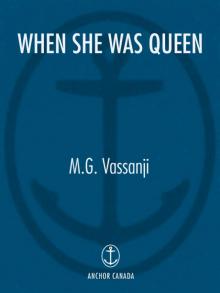 When She Was Queen
When She Was Queen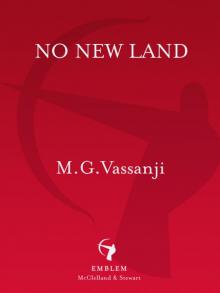 No New Land
No New Land Nostalgia
Nostalgia Mordecai Richler
Mordecai Richler The Book of Secrets
The Book of Secrets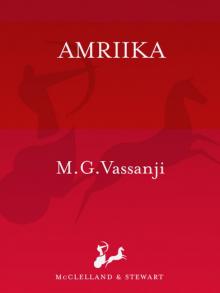 Amriika
Amriika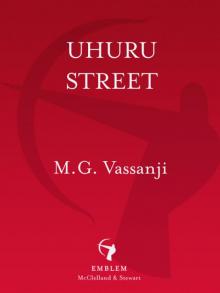 Uhuru Street
Uhuru Street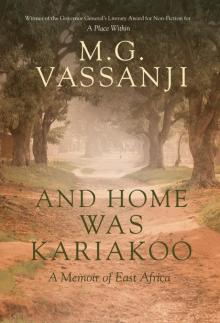 And Home Was Kariakoo
And Home Was Kariakoo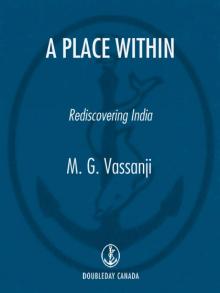 A Place Within
A Place Within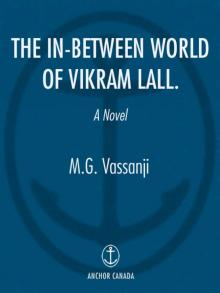 The In-Between World of Vikram Lall
The In-Between World of Vikram Lall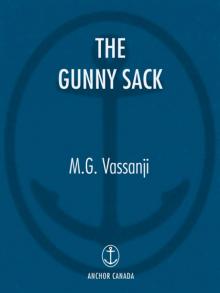 The Gunny Sack
The Gunny Sack